Watercolor flower drawings are a relaxing way for people to express creativity and enjoy the beauty of nature. With just a few basic materials and simple techniques, anyone can learn to paint gentle petals, smooth leaves, and vibrant blooms.
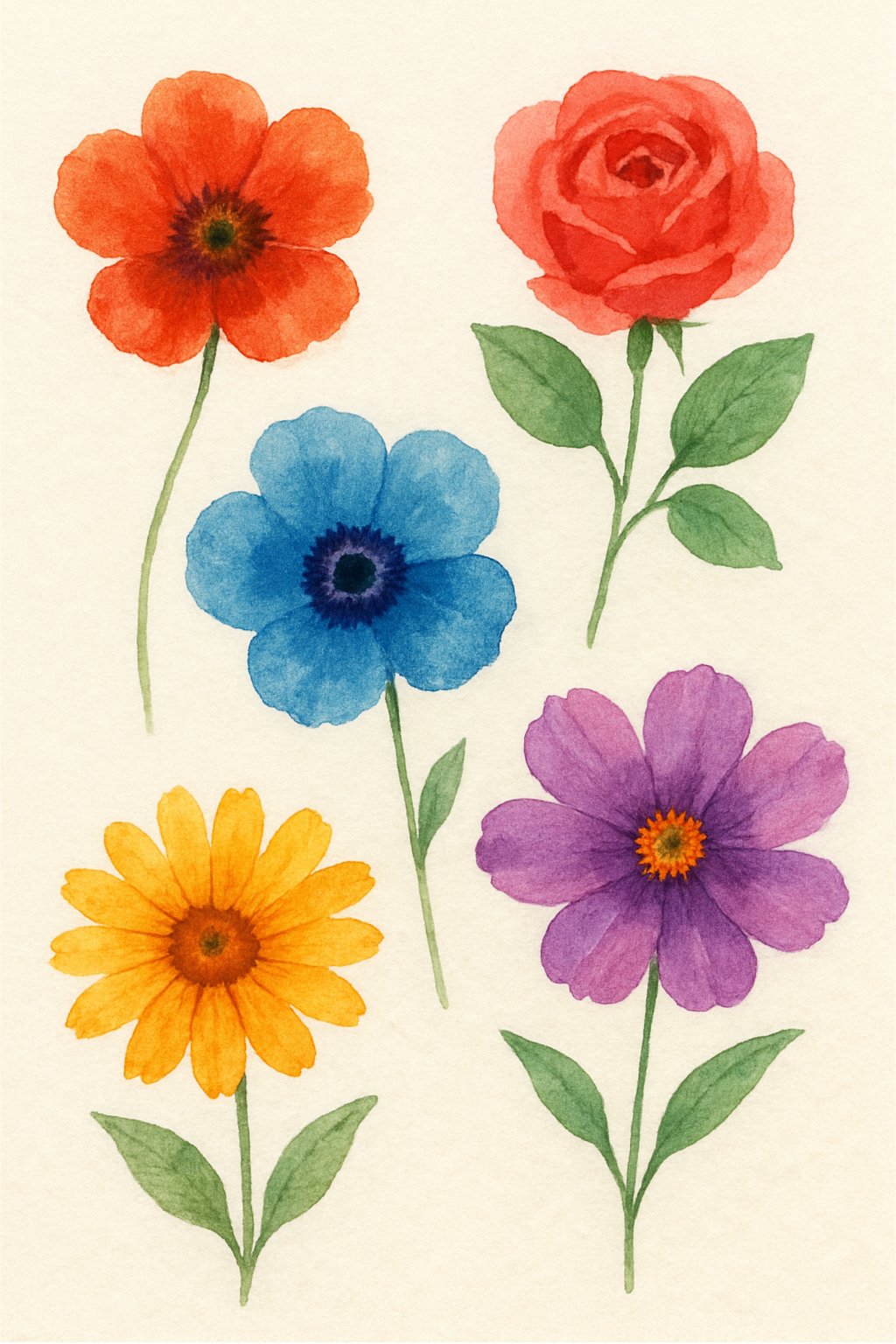
Learning aesthetic flower watercolor drawing builds both art skills and confidence while letting artists create stunning pieces. These styles are perfect for beginners and those looking to enjoy art in a calm, approachable way.
Aesthetic Flower Drawing Watercolors
1) Layered petal techniques for depth and texture
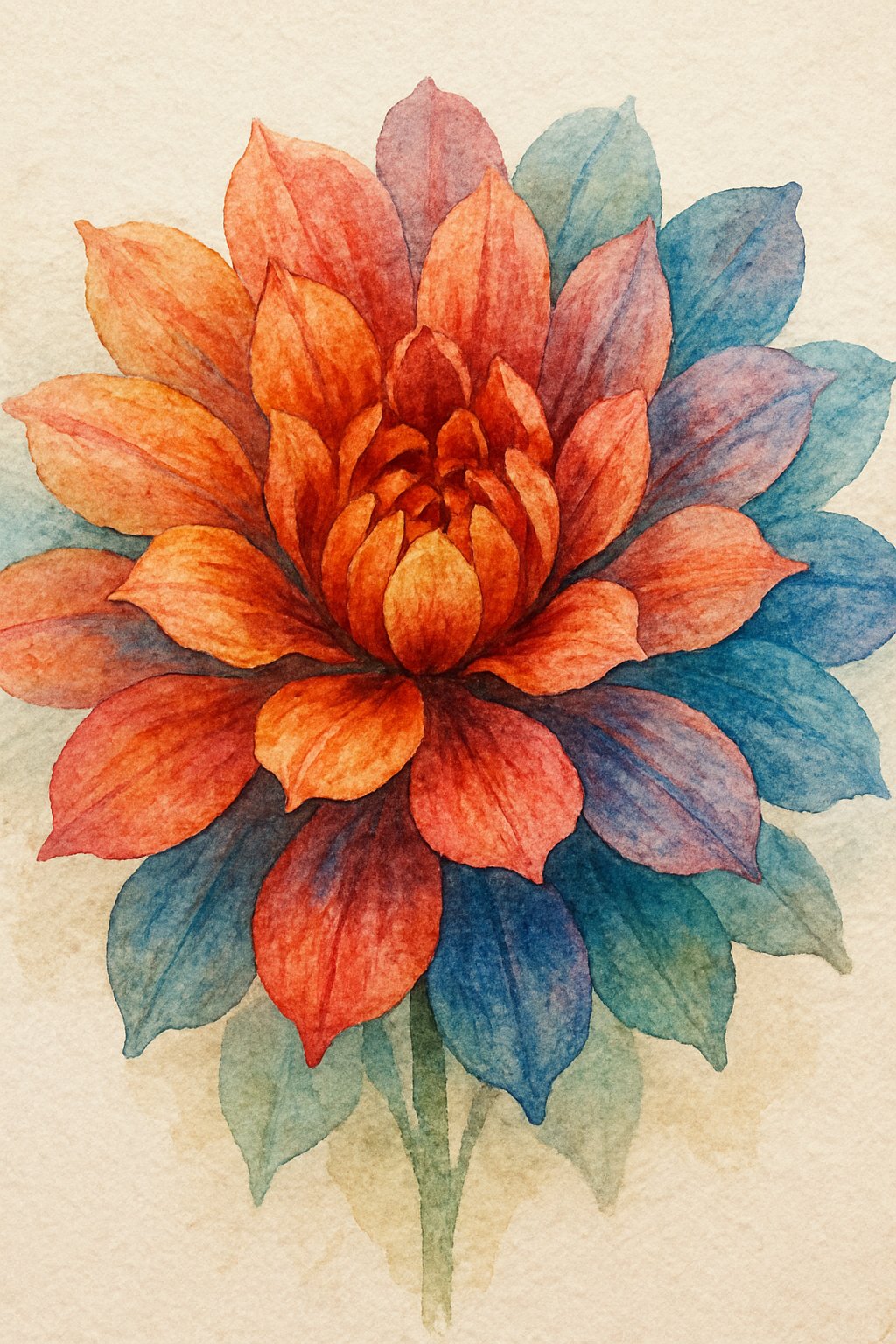
Artists use layered petal techniques to add depth and texture to flower watercolor paintings. Each layer is built with gentle, overlapping strokes.
Watercolor shines in this process, as transparent washes create soft transitions and lifelike dimension. Multiple layers of color help petals look more realistic and vibrant, as explained in this detailed guide to layered petals.
2) Wet-on-wet blending to create soft gradients
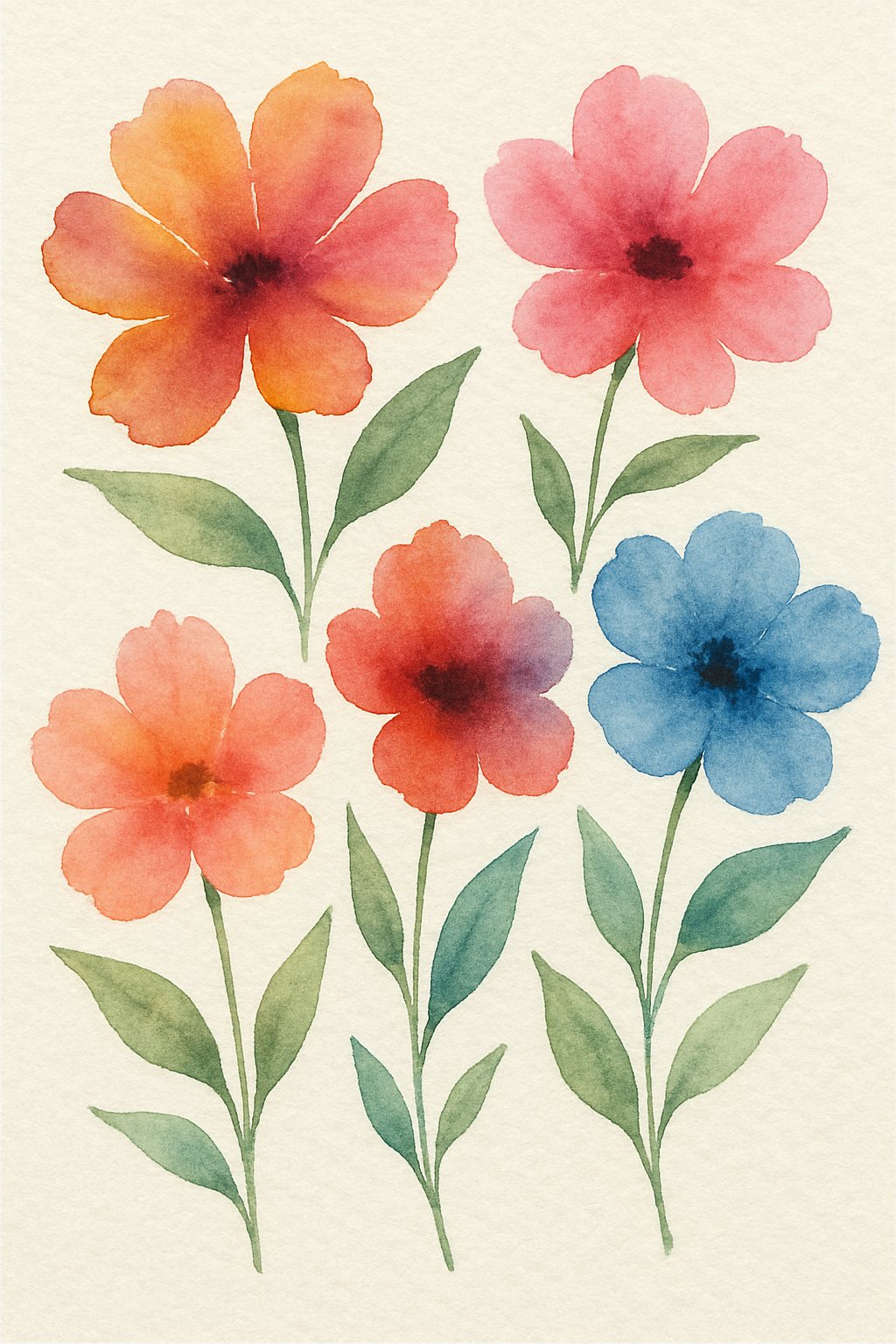
Wet-on-wet blending in watercolor involves adding wet paint to already damp paper. This allows colors to flow and mix naturally on the surface.
Artists often use this technique to make soft transitions in petals and backgrounds. It is useful for creating gentle gradients and soft edges in flower paintings.
For more details, see how the wet-on-wet technique creates soft blends and gradients.
3) Using salt to add organic texture effects
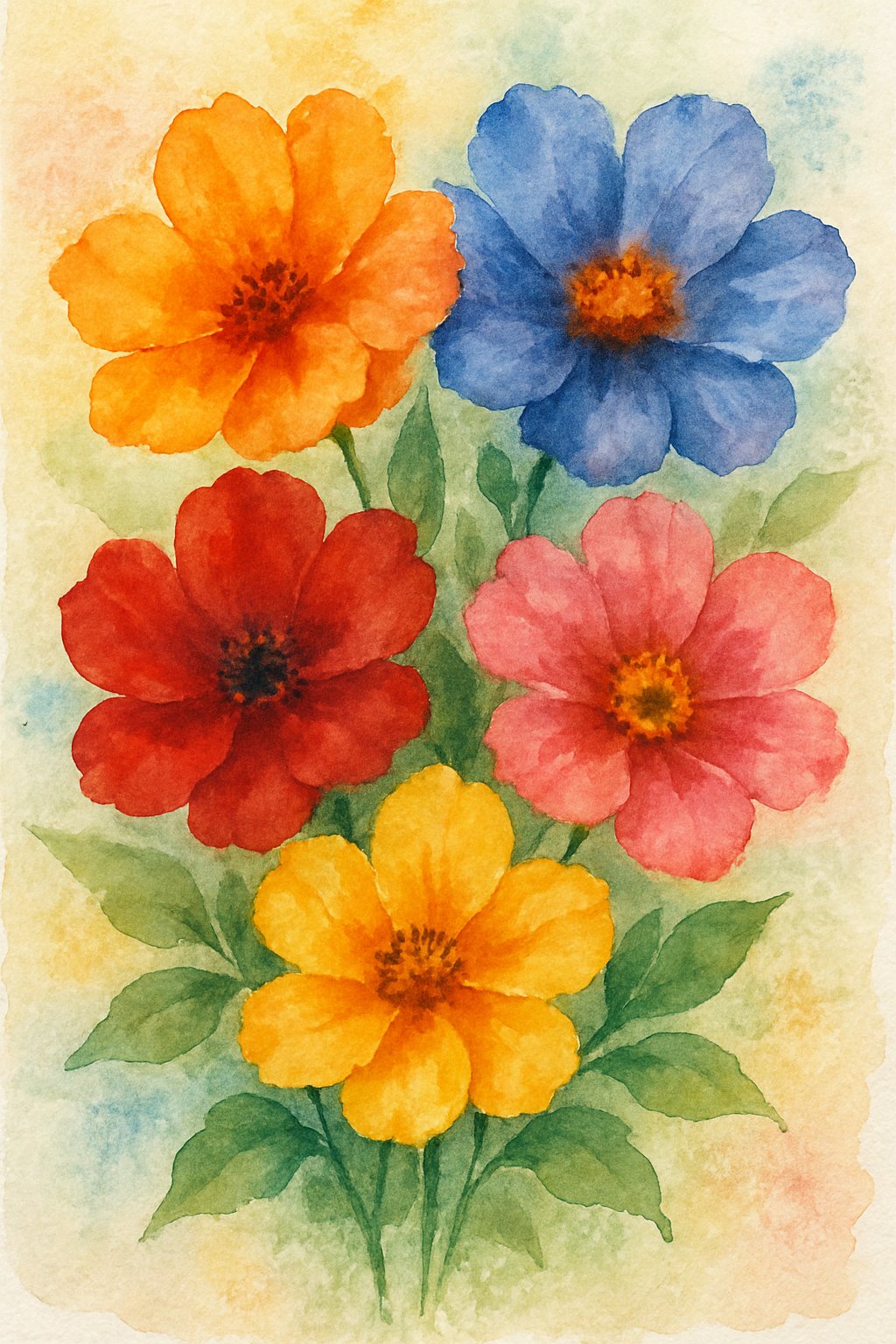
Artists sprinkle salt onto wet watercolor paint to create unique, natural-looking textures. The salt crystals absorb water and pigment, leaving behind interesting patterns as the surface dries.
This simple technique is popular for enhancing backgrounds, petals, or leaves in watercolor flower paintings. Learn more from this guide to salt texture techniques.
4) Delicate linework with fine brushes for details
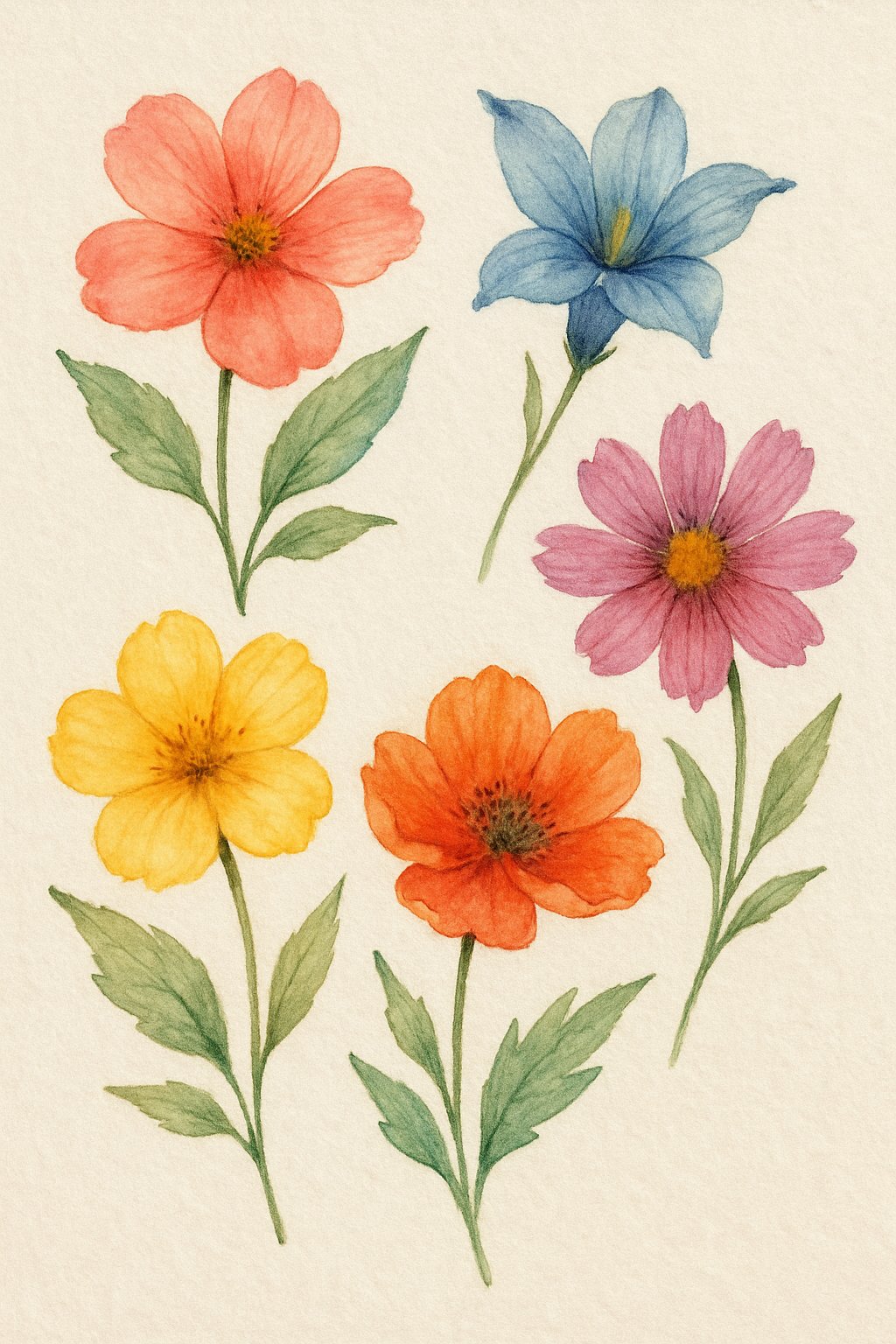
Artists often use very fine brushes to add delicate lines to flower paintings.
This technique helps show tiny veins in petals or the soft edges of leaves.
Fine linework combines well with watercolor’s soft washes, creating elegant and precise floral details.
To see examples, visit these floral line drawing ideas and tutorials.
5) Limited color palettes for cohesive aesthetics
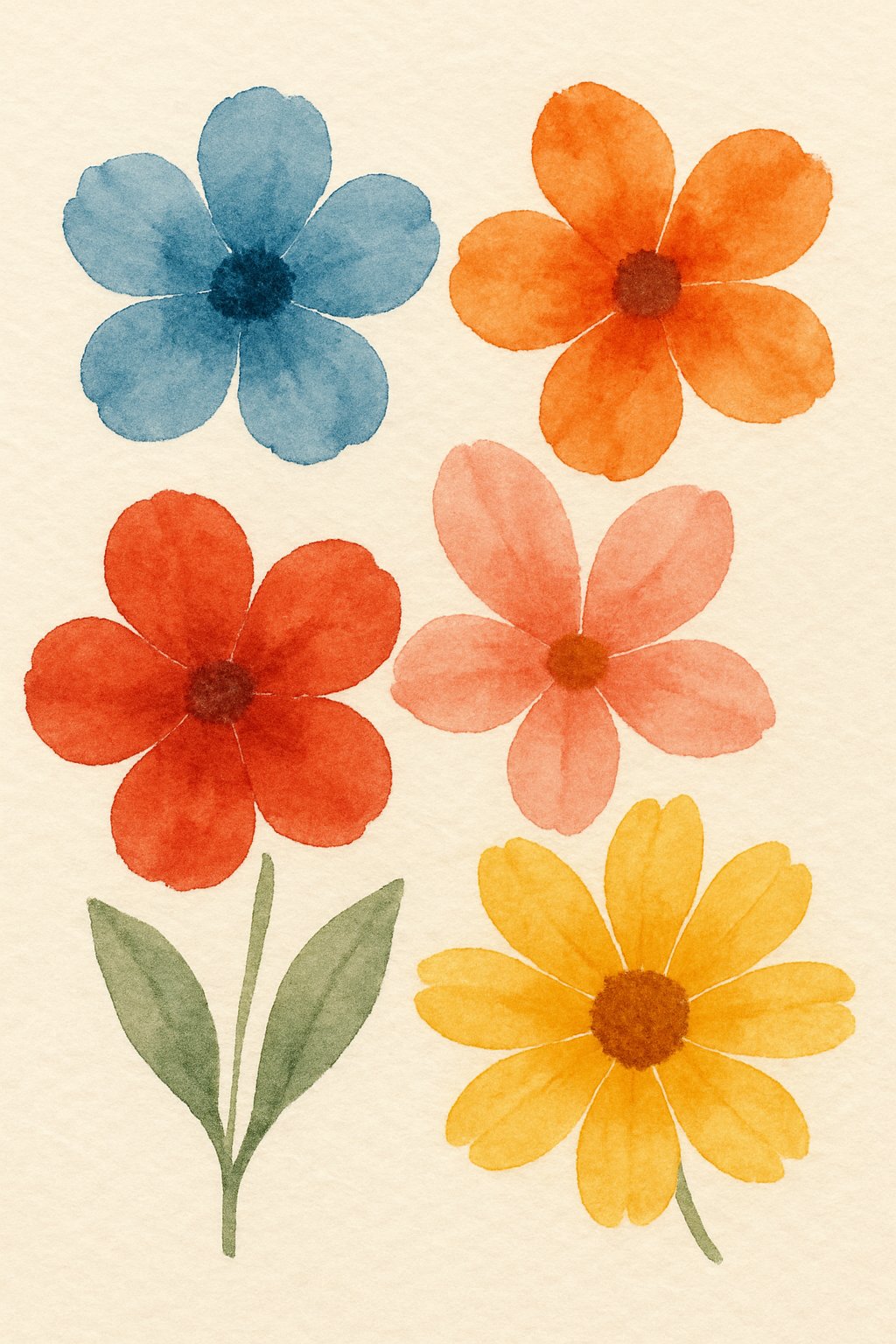
Using a limited color palette helps flower watercolor drawings look balanced and unified.
Artists pick a few colors that work well together, often based on color theory.
Palette generators can make choosing colors easier, offering many aesthetic color palettes to inspire creative choices.
Essential Watercolor Techniques for Flower Drawings
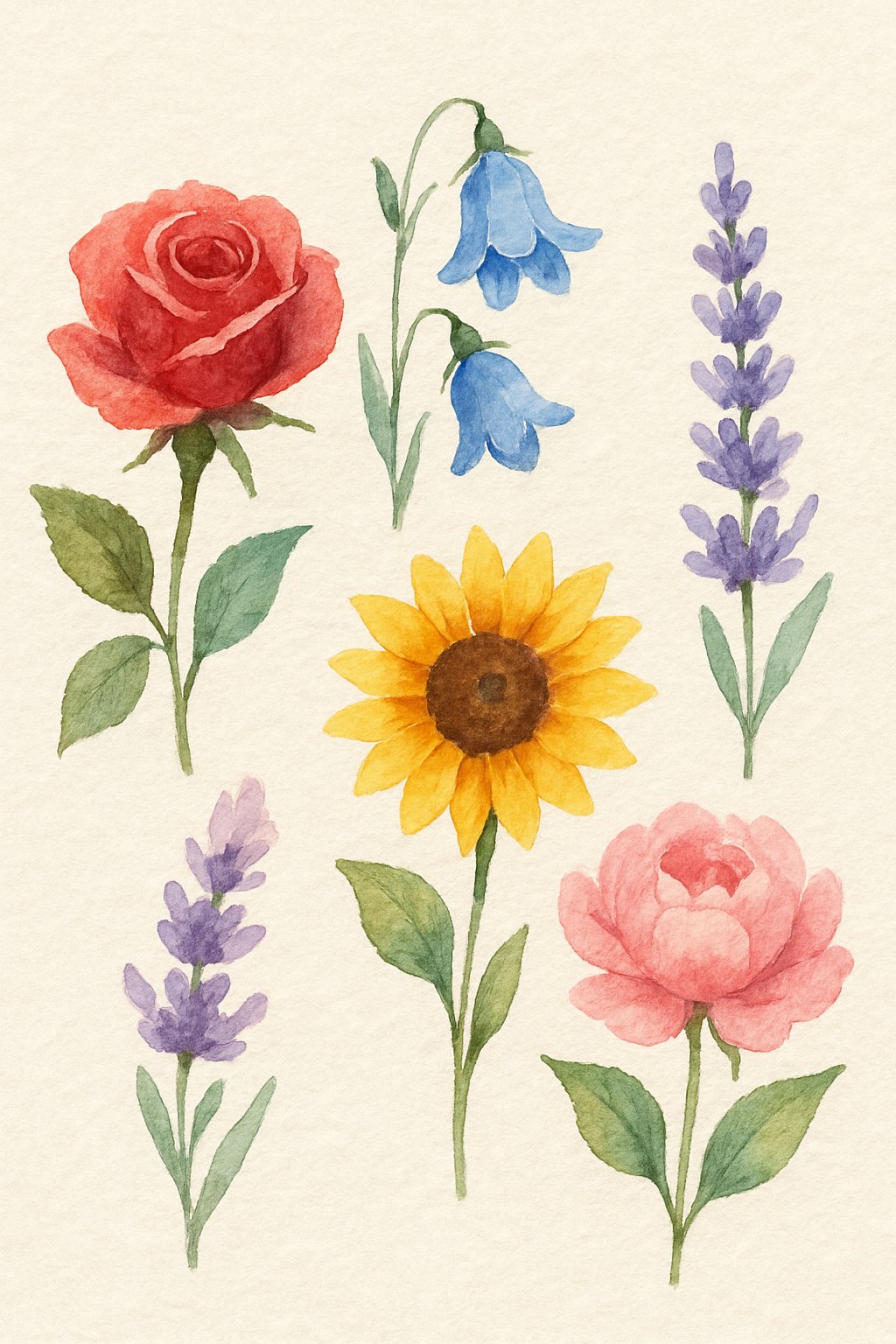
Painting realistic watercolor flowers depends on mastering a few key techniques. Knowing how to handle layering, edges, and color mixing will give control over your painting and help you create natural, beautiful floral art.
Layering and Transparency
Layering is one of the most important watercolor techniques. Artists work in thin washes, called “glazes,” that let the paper show through. Each layer must dry before the next is added. This builds depth. Layering clear washes of color on top of each other helps create flower petals that look luminous and detailed.
Transparency is key. Too much paint or layering too fast can make the colors look muddy. Using a soft, damp brush can help keep the previous layers from being disturbed. The table below shows some common layering results:
| Number of Layers | Effect |
|---|---|
| 1 | Light, bright, sheer color |
| 2-3 | Richer color, gentle shadows |
| 4+ | Deep shadows, complex textures |
Take time to let each layer dry fully before painting another. This keeps edge control and color clarity.
Creating Soft Edges
Soft edges are important for making petals look delicate and lifelike. To get a soft edge, artists can work with a wet brush on wet paper—called the wet-on-wet technique. This causes the edges of a painted shape to blend and blur, similar to how real flower petals fade.
Another way is to use a clean, damp brush to blend the edge of a shape after the paint is put down. This helps avoid harsh lines and gives the flower a natural, airy look. Artists can also lift color while it is still damp to create highlights or lighter sections.
Soft edges should be used on some petals, while others may need sharper lines to show detail. Balancing both keeps the flower drawing from looking flat or unnatural.
Color Mixing for Natural Petals
Natural flower petals are rarely just one color. Mixing watercolors rather than using them straight from the pan or tube helps mimic the variations seen in nature. A painter mixes two or more colors, sometimes on a palette and sometimes right on the wet paper.
Adding small drops of a second color into a wet petal lets colors blend smoothly. For example, mixing red and a touch of yellow makes a warm poppy red, while blue added to pink can yield softer lavender tones. Test mixed colors on a spare sheet to check results.
Layering mixed colors adds depth. Using a limited palette of three to five basic colors often results in more realistic, unified flower paintings. This technique makes each flower feel unique and true-to-life, as demonstrated in many beginner watercolor flower tutorials.
Choosing the Right Supplies for Aesthetic Results
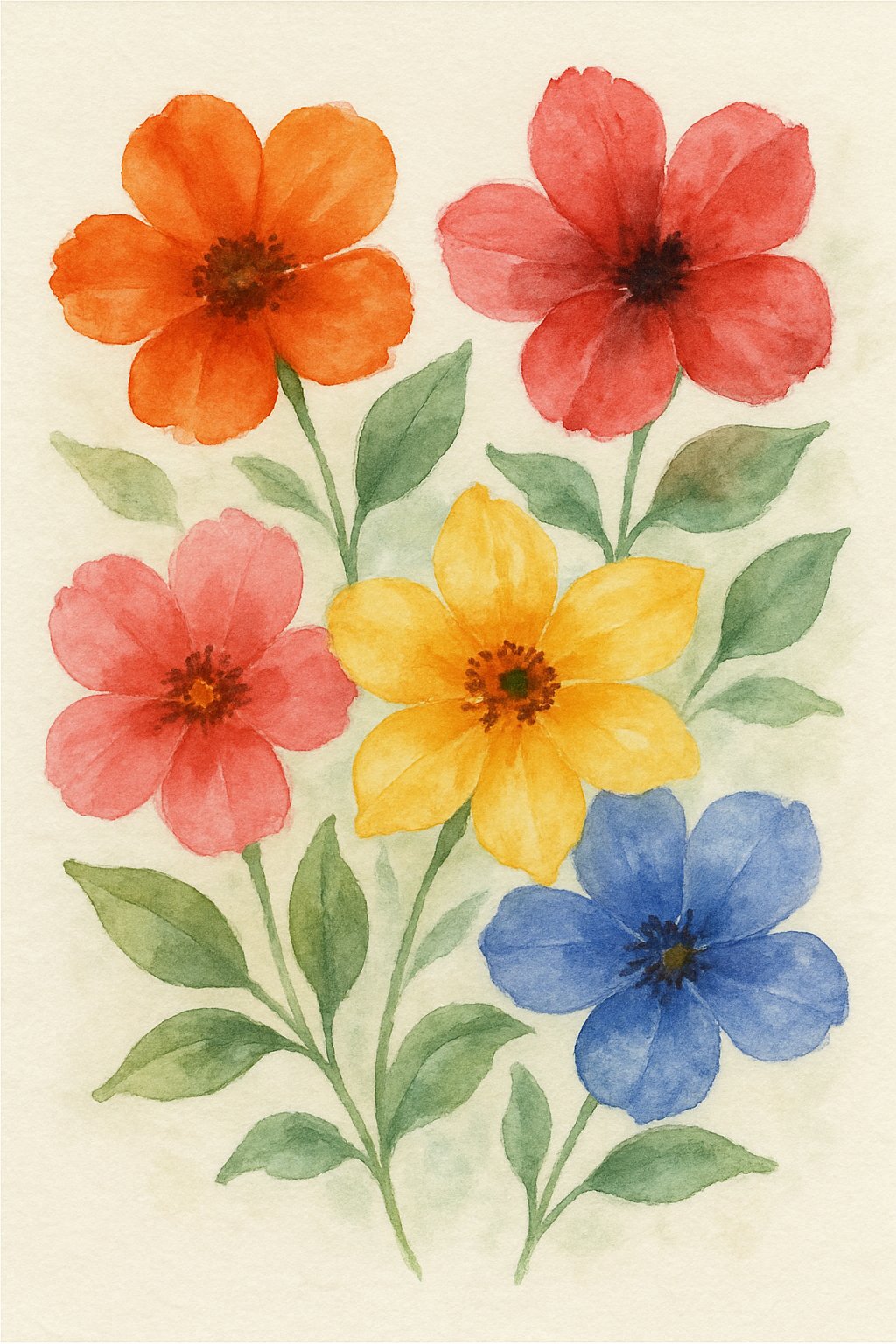
The right supplies have a big impact on how watercolor flower drawings look. Using quality materials helps artists get bright colors, smooth blends, and crisp lines.
Recommended Watercolor Papers
Selecting good watercolor paper is essential for flower art. Cold press paper is popular because it has a slight texture that lets watercolors flow but still holds detail. Hot press paper is smoother and works well for delicate petals and fine lines.
Paper weight matters too. Thicker papers, like 300gsm (140lb), prevent buckling when wet. They let the artist add several layers without damaging the surface. Look for papers labeled “100% cotton” for best results. These papers handle water well and boost color vibrancy.
Artists should avoid thin, low-quality papers. These often warp with too much water and can make colors look dull. Brands like Arches, Canson, and Fabriano are trusted by watercolor artists for high-quality sheets.
Brush Types for Detail and Texture
Different brushes help create various effects in floral watercolors. Round brushes are especially useful. They can paint both thin lines and broad petals with their pointed tips. Sizes 4, 6, and 8 are great for most tasks.
Liner or rigger brushes make it easy to add thin stems and fine details. For larger petals and background washes, a mop brush is effective because it holds lots of water and spreads color smoothly. Fans or flat brushes can add texture for specific details like grassy edges or layered petals.
Synthetic brushes are durable and affordable, while natural hair options like sable offer more control with water flow. It is helpful to keep a small selection of both types for different needs. Taking care of brushes, such as cleaning them after each painting, helps maintain their shape and prolongs their use.
Frequently Asked Questions
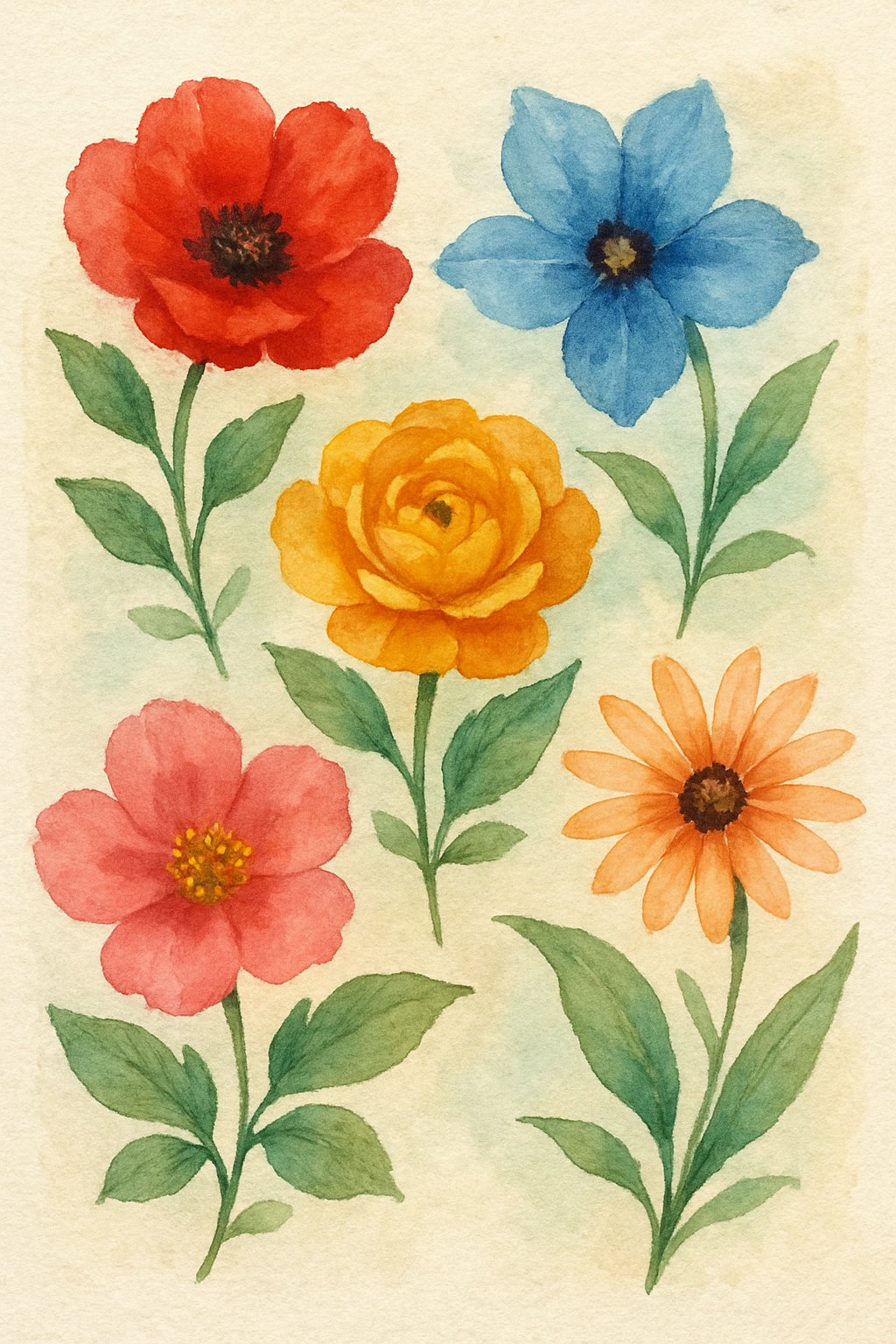
Watercolor flower painting can be easy to start with the right guidance and tools. Techniques like soft blending, detailed linework, and limited color use help create beautiful, modern art anyone can try.
What are some simple watercolor flower tutorials for beginners?
Beginner artists can follow step-by-step guides that show how to paint roses, sunflowers, and peonies using easy shapes. Video lessons and illustrated tutorials break down each flower into parts, so the process feels less overwhelming.
Many online videos feature five simple watercolor flowers for beginners. These guides use basic strokes, simple palettes, and slow instructions.
How can I create aesthetic watercolor flower paintings with easy steps?
Start by sketching the loose outline of a flower. Use the wet-on-wet blending technique to make soft color transitions. Layer colors for richer petals, then add finer details with a small brush.
Try limiting your color palette and focusing on clean, simple shapes for a cohesive look.
Where can I find free resources to learn watercolor floral drawing?
Free tutorials are available on many websites and platforms. YouTube has beginner-friendly videos on floral watercolor painting. Some art blogs and Pinterest boards also offer illustrated step-by-step instructions.
Websites like Shelly Cluff Art’s beginner guide provide written guides and ideas.
What techniques are used for painting aesthetic watercolor flowers?
Layering light washes and letting each layer dry before adding detail helps create realistic depth. Wet-on-wet blending makes petals look soft and dreamy.
Artists use salt for organic textures, while fine brushes add thin detail lines. Layered petal techniques and limited palettes keep the artwork modern and fresh.
Can you suggest aesthetic watercolor painting ideas for inspiration?
Trying different flower types and arrangements gives variety. Artists paint bouquets, single stems, and close-ups of petals.
Experiment with abstract shapes, soft backgrounds, or mixed floral pieces for unique effects. Drawing inspiration from seasonal blooms can also lead to interesting color choices.
Which flowers are the easiest to start with when learning watercolor painting?
Simple flowers such as daisies, tulips, and poppies are ideal for beginners. These flowers have basic shapes and do not require complex layering or shading.
Roses and peonies can also be tried early on, using step-by-step guidance that focuses on building up easy layers rather than detail right away.
